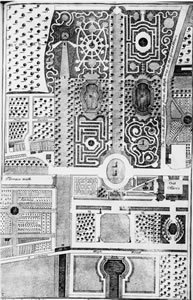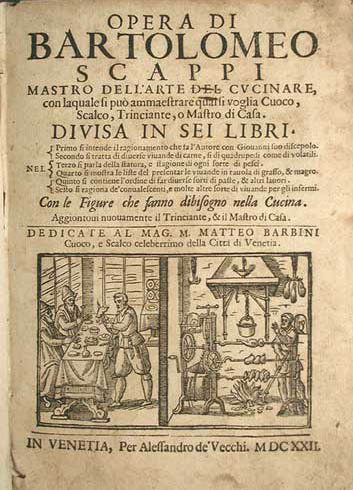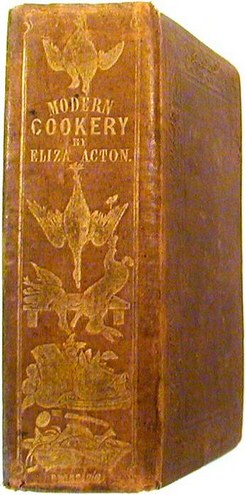|
Leeds University Library's Cookery Collection
Leeds University Library's Cookery Collection is one of the five Designation Scheme, Designated collections held by the Brotherton Library at the University of Leeds. It comprises an extensive collection of international books, manuscripts and archives relating to food, cooking and culinary culture. The collection began with a donation in 1939 to the Library of 1,500 books and a selection of manuscripts. The collection has grown since and been supplemented with further donations. It now consists of more than 8,000 printed cookery books and 75 manuscripts, spanning the period 2500 BC to present day, with the majority of the works from the early 16th–20th century. In addition to recipes and cookery books, the collection includes texts about food production, household management, brewery, gardening and the medicinal uses of food. Numerous food historians have used the Cookery Collection to inform their research and publications. The Cookery Collection is located in Special Collec ... [...More Info...] [...Related Items...] OR: [Wikipedia] [Google] [Baidu] |
Brotherton Library
The Brotherton Library is a 1936 Grade II listed Beaux-Arts building with some art deco fittings, located on the main campus of the University of Leeds. It was designed by the firm of Lanchester & Lodge, and is named after Edward Brotherton, 1st Baron Brotherton, who in 1927 donated £100,000 to the university as funding for its first purpose-built library. The Brotherton Library is a hub in what has become ''Leeds University Library''. Initially, it contained all of the university's books and manuscripts, with the exception of books housed in the separate Medical Library and Clothworkers' (Textile) Library. it contains the main collections in arts and languages and the Special Collections' Research Centre, and it houses part of the University Library's administration. Science, engineering and social science research collections are located in the Edward Boyle Library, while the Laidlaw Library contains core texts for undergraduates and a high demand collection and the Hea ... [...More Info...] [...Related Items...] OR: [Wikipedia] [Google] [Baidu] |
Batty Langley
Batty Langley (''baptised'' 14 September 1696 – 3 March 1751) was an English garden designer, and prolific writer who produced a number of engraved designs for "Gothick" structures, summerhouses and garden seats in the years before the mid-18th century. An eccentric landscape designer, he gave four of his sons the names Hiram, Euclid, Vitruvius and Archimedes. He published extensively, and attempted to "improve" Gothic forms by giving them classical proportions. Early life Langley was baptised in Twickenham, Middlesex, the son of a jobbing gardener Daniel Langley and his wife Elizabeth. He bore the name of David Batty, one of his father's patrons. He started worked as a gardener, inheriting some of his father's clients in Twickenham, then a village of suburban villas within easy reach of London by a pleasant water journey on the Thames. An early client was Thomas Vernon of Twickenham Park. He married Anne Smith in February 1719. They had four children, but she died in Ju ... [...More Info...] [...Related Items...] OR: [Wikipedia] [Google] [Baidu] |
Pope Pius V
Pope Pius V ( it, Pio V; 17 January 1504 – 1 May 1572), born Antonio Ghislieri (from 1518 called Michele Ghislieri, O.P.), was head of the Catholic Church and ruler of the Papal States from 8 January 1566 to his death in May 1572. He is venerated as a saint of the Catholic Church. He is chiefly notable for his role in the Council of Trent, the Counter-Reformation, and the standardization of the Roman Rite within the Latin Church. Pius V declared Thomas Aquinas a Doctor of the Church. As a cardinal, Ghislieri gained a reputation for putting orthodoxy before personalities, prosecuting eight French bishops for heresy. He also stood firm against nepotism, rebuking his predecessor Pope Pius IV to his face when he wanted to make a 13-year-old member of his family a cardinal and subsidize a nephew from the papal treasury. [...More Info...] [...Related Items...] OR: [Wikipedia] [Google] [Baidu] |
Pope Pius IV
Pope Pius IV ( it, Pio IV; 31 March 1499 – 9 December 1565), born Giovanni Angelo Medici, was head of the Catholic Church and ruler of the Papal States from 25 December 1559 to his death in December 1565. Born in Milan, his family considered itself a branch of the House of Medici and used the same coat of arms. Although modern historians have found no proof of this connection, the Medici of Florence recognized the claims of the Medici of Milan in the early 16th century. Pope Paul III appointed Medici Archbishop of Ragusa, and sent him on diplomatic missions to Germany and Hungary. He presided over the final session of the Council of Trent. His nephew, Cardinal Charles Borromeo, was a close adviser. As pope, Pius IV initiated a number of building projects in Rome, including one to improve the water supply. Life Early life Giovanni Angelo Medici was born in Milan on 31 March 1499 as the second of eleven children to Bernardino Medici and Clelia Serbelloni. Giovanni Medici was ... [...More Info...] [...Related Items...] OR: [Wikipedia] [Google] [Baidu] |
Bartolomeo Scappi
Bartolomeo Scappi (c. 1500 – 13 April 1577) was a famous Italian Renaissance chef. His origins had been the subject of speculation, but recent research shows that he came from the town of Dumenza in Lombardy, according to the inscription on a stone plaque in the church of Luino.. Prior to this, the first known fact in his life had been that in April 1536 he organised a banquet while he was in the service of Cardinal Lorenzo Campeggio. He served several other cardinals after this, then began to serve pope Pius IV, entering the service of the Vatican kitchen. He continued to work as a chef for the pope Pius V. Scappi is often considered one of the first internationally renowned celebrity chefs. He gained new fame in 1570 when his monumental cookbook, ''Opera dell'arte del cucinare'', was published. In the book, he lists about 1,000 recipes of Renaissance cuisine and describes cooking techniques and tools, giving the first known picture of a fork.. He declared Parmesan to be ... [...More Info...] [...Related Items...] OR: [Wikipedia] [Google] [Baidu] |
Modern Cookery For Private Families
''Modern Cookery for Private Families'' is an English cookery book by Eliza Acton. It was first published by Longmans in 1845, and was a best-seller, running through 13 editions by 1853, though its sales were later overtaken by Mrs Beeton. On the strength of the book, Delia Smith called Acton "the best writer of recipes in the English language", while Elizabeth David wondered why "this peerless writer" had been eclipsed by such inferior and inexperienced imitators. It was one of the first cookery books to provide lists of ingredients, exact quantities, and cooking times, and to include Eastern recipes for chutneys. The book was well received on its first appearance; critics thought it the best cookery book they had seen, combining as it did clarity of instructions with excellent organisation. Acton's recipes and writing style have been admired by cooks including Bee Wilson, Elizabeth David, Delia Smith and Jane Grigson; Clarissa Dickson Wright praises her writing but criticises ... [...More Info...] [...Related Items...] OR: [Wikipedia] [Google] [Baidu] |
Eliza Acton
Eliza Acton (17 April 1799 – 13 February 1859) was an English food writer and poet who produced one of Britain's first cookery books aimed at the domestic reader, ''Modern Cookery for Private Families''. The book introduced the now-universal practice of listing ingredients and giving suggested cooking times for each recipe. It included the first recipes in English for Brussels sprouts and for spaghetti. It also contains the first recipe for what Acton called "Christmas pudding"; the dish was normally called plum pudding, recipes for which had appeared previously, although Acton was the first to put the name and recipe together. Acton was born in 1799 in Sussex. She was raised in Suffolk where she ran a girls' boarding school before spending time in France. On her return to England in 1826 she published a collection of poetry and released her cookery book in 1845, aimed at middle class families. Written in an engaging prose, the book was well received by reviewers. It ... [...More Info...] [...Related Items...] OR: [Wikipedia] [Google] [Baidu] |
Adulterated Food
Adulteration is a legal offence and when the food fails to meet the legal standards set by the government, it is said to have been Adulterated Food. One form of adulteration is an addition of another substance to a food item in order to increase the quantity of the food item in raw form or prepared form, which results in the loss of actual quality of food item. These substances may be either available food items or non-food items. Among meat and meat products some of the items used to adulterate are water or ice, carcasses, or carcasses of animals other than the animal meant to be consumed. In the case of seafood, adulteration may refer to species substitution ( mislabeling), which replaces the species identified on the product label with another species, or undisclosed processing methods, in which treatments such as additives, excessive glazing, or short-weighting are not disclosed to the consumer. History Historians have recognized cases of food adulteration in Ancient Rome and th ... [...More Info...] [...Related Items...] OR: [Wikipedia] [Google] [Baidu] |
Samuel Pegge
Samuel ''Šəmūʾēl'', Tiberian: ''Šămūʾēl''; ar, شموئيل or صموئيل '; el, Σαμουήλ ''Samouḗl''; la, Samūēl is a figure who, in the narratives of the Hebrew Bible, plays a key role in the transition from the biblical judges to the United Kingdom of Israel under Saul, and again in the monarchy's transition from Saul to David. He is venerated as a prophet in Judaism, Christianity, and Islam. In addition to his role in the Hebrew scriptures, Samuel is mentioned in Jewish rabbinical literature, in the Christian New Testament, and in the second chapter of the Quran (although Islamic texts do not mention him by name). He is also treated in the fifth through seventh books of ''Antiquities of the Jews'', written by the Jewish scholar Josephus in the first century. He is first called "the Seer" in 1 Samuel 9:9. Biblical account Family Samuel's mother was Hannah and his father was Elkanah. Elkanah lived at Ramathaim in the district of Zuph. His genealog ... [...More Info...] [...Related Items...] OR: [Wikipedia] [Google] [Baidu] |
Richard II
Richard II (6 January 1367 – ), also known as Richard of Bordeaux, was King of England from 1377 until he was deposed in 1399. He was the son of Edward the Black Prince, Prince of Wales, and Joan, Countess of Kent. Richard's father died in 1376, leaving Richard as heir apparent to his grandfather, King Edward III; upon the latter's death, the 10-year-old Richard succeeded to the throne. During Richard's first years as king, government was in the hands of a series of regency councils, influenced by Richard's uncles John of Gaunt and Thomas of Woodstock. England then faced various problems, most notably the Hundred Years' War. A major challenge of the reign was the Peasants' Revolt in 1381, and the young king played a central part in the successful suppression of this crisis. Less warlike than either his father or grandfather, he sought to bring an end to the Hundred Years' War. A firm believer in the royal prerogative, Richard restrained the power of the aristocracy and r ... [...More Info...] [...Related Items...] OR: [Wikipedia] [Google] [Baidu] |
The Forme Of Cury
''The Forme of Cury'' (''The Method of Cooking'', from Middle French : 'to cook') is an extensive 14th-century collection of medieval English recipes. Although the original manuscript is lost, the text appears in nine manuscripts, the most famous in the form of a scroll with a headnote citing it as the work of "the chief Master Cooks of King Richard II". The name ''The Forme of Cury'' is generally used for the family of recipes rather than any single manuscript text. It is among the oldest extant English cookery books, and the earliest known to mention olive oil, gourds, and spices such as mace and cloves. Context The collection was named ''The Forme of Cury'' by Samuel Pegge, who published an edition of one of the manuscripts in 1780 for a trustee of the British Museum, Gustavus Brander. It is one of the best-known medieval guides to cooking. ''The Forme of Cury'' may have been written partly to compete with ''Le Viandier of Taillevent'', a French cookery book ... [...More Info...] [...Related Items...] OR: [Wikipedia] [Google] [Baidu] |










